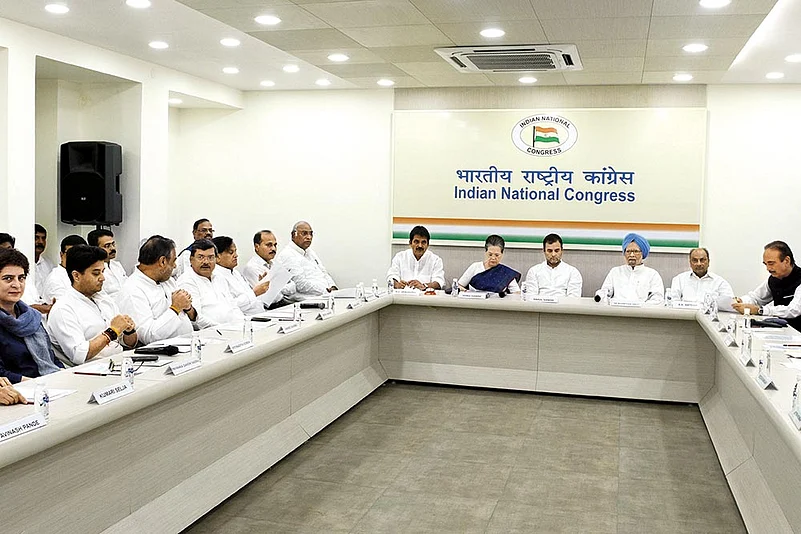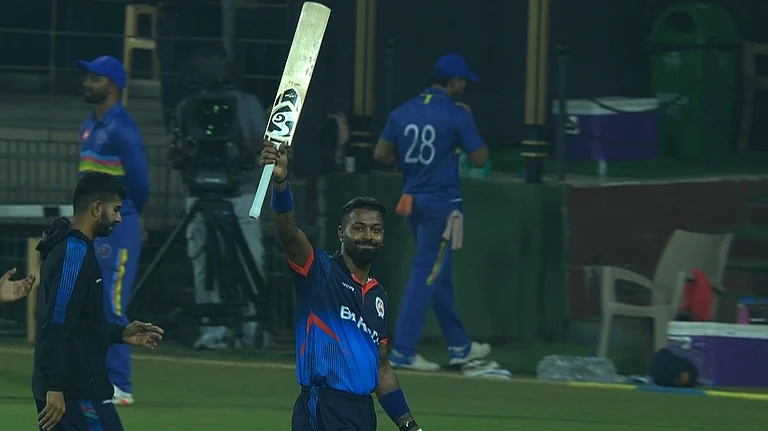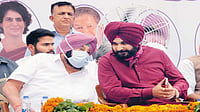Second comings don’t necessarily guarantee a revival of past glory. On August 10, frustrated by Rahul Gandhi’s obduracy on stepping down as party president, the old guard of the Congress manoeuvered an ailing and semi-retired Sonia Gandhi back as interim chief. The 72-year-old matriarch of India’s ‘grand old party’ was projected as the helping hand that would pull the Congress out of its quicksand of political ignominy. Nearly three months on, assembly poll results for Maharashtra and Haryana show that despite its failure in containing a progressively worsening economic crisis, the BJP’s fortunes haven’t dipped significantly, while the Congress’s revival seems wobbly, at best.
“For Sonia, this is déjà vu. She once again finds herself in the unenviable position of rebuilding a completely gutted organisation; this time handed to her by her son,” a senior party MP tells Outlook. Back in 1998, Congress warhorses like N.D. Tiwari, Arjun Singh, K. Natwar Singh, Sharad Pawar and Ghulam Nabi Azad had scripted the unceremonious exit of Sitaram Kesri from the Congress presidency. The party had lost two successive Lok Sabha polls and a string of assembly elections back then, like it has since 2014. Sonia was anointed Congress president on March 6, 1998—just a fortnight after the party lost the general elections.
In her address to party workers at Delhi’s Siri Fort Auditorium that day, Sonia had said: “I have come to this office at a critical point in the history of the party. Our numbers in Parliament have dwindled. Our support base among the electorate has seriously eroded. We are in danger of losing our central place in the polity of our country.” Over 21 years later, when Sonia returned as interim chief, she could have simply read the same speech. Through her 19-year-long presidency, the Congress had been in power at the Centre for a decade (2004 to 2014), before ‘misadventures’ of her son and her own tacit approval of them sent the party into an electoral tailspin.

1998, Pachmarhi—the beginning of Sonia as congress president.
In 1998, within six months of taking charge, Sonia had presided over the party’s Pachmarhi conclave where she gave colleagues a call for ekla chalo—go alone—to revive the Congress. Her team of advisors then included Arjun Singh, Natwar Singh, K. Karunakaran, Ambika Soni and Ahmed Patel, all seasoned politicians with vast experience of grassroots politics or organisational matters. Over the next few months this group grew to include Manmohan Singh, Pranab Mukherjee, P. Shiv Shankar and even Sharad Pawar, though he resigned to form the Nationalist Congress Party (NCP) a year later after questioning Sonia’s foreign origin. Evidently, she steered clear of husband Rajiv Gandhi’s script of taking political advice from a coterie of non-political people.
In 1999, when the fall of Atal Bihari Vajpayee’s 13-month NDA government forced another election, Sonia’s ekla chalo policy failed miserably. The Congress’s strength in the Lok Sabha fell to 114 seats in 1999—its lowest tally until the 2014 elections when it plunged to just 44 seats. Sonia got down to the drawing board once again. By 2003, she appointed a slew of emissaries to work out alliances with regional parties, including Pawar’s NCP and M. Karunanidhi’s DMK—a party the Congress had attacked virulently in the past for sympathising with the assassins of Rajiv Gandhi. A year later, the Congress-led UPA coalition returned to power—and held on to it till 2014.
The Sonia-era between 1998 and 2017 failed to revive the party in states like UP, Bihar, Tamil Nadu and Odisha. However, her success in stemming the rot in other states and keeping the party together, particularly in the period between 1998 and 2004, made Sonia a better choice to lead the party through the current mess than Rahul or his whippersnappers.
Many party seniors believe that the Maharashtra and Haryana assembly poll results show that Sonia’s biggest hurdle is the baggage of younger leaders, with little electoral or organisational capabilities, that Rahul left behind. “In Haryana, Ashok Tanwar should have never been given prominence because he didn’t have any following beyond some pockets in Sirsa, while in Maharashtra, the Congress should have projected a more experienced leader than Balasaheb Thorat,” says a Congress leader. Party spokesperson Sanjay Jha concedes that “a lot of time was lost in Haryana because of the uncertainty following Rahul’s resignation…we could have unseated the BJP government had we been prompt in addressing internal issues”.
The Congress had lost over 70 days in its search for Rahul’s successor. A member of the Congress Working Committee (CWC) notes that by the time Sonia returned, the first session of the new Lok Sabha had ended, with the Narendra Modi government scrapping Article 370. The decision, the CWC member says, had “already given the BJP an upper hand for the assembly elections while the Congress continued to implode”. During the session too, her choice of Adhir Ranjan Chowdhury as party leader was questioned by many.

2019, CWC meet, new delhi—sonia returns as interim president.
“Sonia’s first decision as interim chief should have been to revamp the AICC and launch nationwide padayatras and rallies to expose the (Narendra) Modi government’s lies on the economy and the continuing attacks on Dalits and minorities. Instead, we got busy preparing programmes to mark Rajiv Gandhi’s 75th birth anniversary and Mahatma Gandhi’s 150th birth anniversary,” a Congress MP says.
The Congress has nearly half-a-dozen frontal organisations dedicated to mobilising different sections of the society—students, youth, professionals, women, farmers et al. Sonia should have read the riot act to office-bearers of these organisations and told them to draft a packed schedule of agitations and public movements. Barring the Mahila Congress headed by Sushmita Dev, none of the other frontal bodies—NSUI, Youth Congress, Kisan Congress, Professional Congress and Seva Dal—have a clear agenda.
Sonia’s unstable health also prevented her from campaigning for the Maharashtra and Haryana polls, but she was left to her own devices even by Rahul and Priyanka. Rahul made more news for his foreign trips in the midst of the campaign than for the half-a-dozen rallies he addressed. Priyanka Gandhi Vadra stayed away from the campaign entirely, ostensibly focusing on her grand Uttar Pradesh revival plan.
A Sonia confidante tells Outlook that soon after her return as party chief, she told leaders of poll-bound states to refrain from any personal attacks against Modi. “Her instruction was clear—focus on failures of the state government and don’t draw Modi into a slanging match.” While the party leadership, particularly in Haryana, followed Sonia’s directions, it was Rahul who revived his attacks on Modi and the Rafale deal—jibes that had cost the Congress the Lok Sabha polls.
With Modi back in power and Amit Shah’s BJP unsparing in its quest to demolish the Congress, the unsteady nucleus of the 134-year-old party has stayed on its fission trajectory. “The crisis we see in the party today is a creation of both Sonia and Rahul,” a party leader says. The veterans continued to draw power from Sonia while Rahul’s confidantes believed they now had a free run with him as the chief, the leader says, adding that the mother-son duo never tried to develop a synergy between the two blocs.
Congress sources say when Ajoy Kumar, Pradyot Debbarma and Ashok Tanwar quit the party, Rahul did not even reach out to them though they had been handpicked by him as state chiefs in Jharkhand, Tripura and Haryana. A section within the party believes that the Congress’s troubles stem more from its ideological vacuum, rather than its leadership crisis. “Sonia is currently interim chief and a full-term president is likely to be elected post-January. The old guard wants her to stay on while some are still hopeful of Rahul’s return. Others are batting for Priyanka. Rahul still wants a non-Gandhi chief. None of this will matter if we have no vision or narrative to offer to the masses and that is our biggest challenge today,” says a former party MP.
Rahul’s 18-month presidential stint had seen the party embrace a softer version of BJP’s Hindutva. Rahul, or his comrades, rarely took to the streets on the issue of targeted lynching of Muslims and Dalits by right-wing mobs, but were seen temple-hopping during elections. After Sonia returned, this blatant display of soft Hindutva was junked, but the Congress is still cautious in reverting to its ‘secular’ identity. As a party leader says: “We don’t use the word secular anymore… we just say the party stands for a pluralistic society.”
Journalist and Congress MP Kumar Ketkar believes this ideological ambivalence is the party’s main problem. “The Congress was never an ideological monolith, but it represented liberalism, religious tolerance, socialism and public welfare. These values are more important today because a huge proportion of young voters are attracted to these ideals. The party has to embrace its original idealism and values if it hopes to bounce back.”
The marginal gains Congress has made in the Haryana assembly polls following an issue-based campaign should give the party some encouragement. But those shouldn’t be a cause for complacency. Sonia has set up a 20-member advisory panel, comprising senior leaders, who will formulate a strategy, find ways of overhauling the party’s functioning and, perhaps, give it a new narrative. A good move, but will it be enough to rejuvenate a listless organisation that is erasing itself from public memory?


























